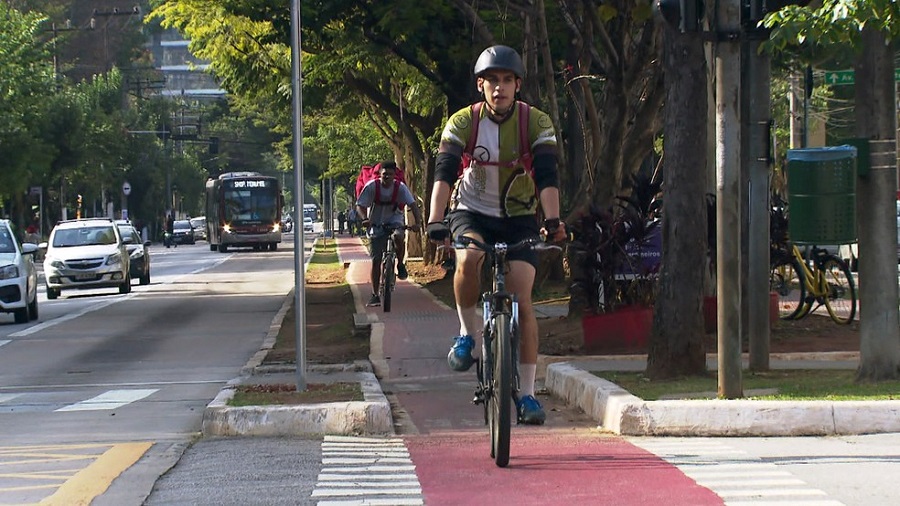RIO DE JANEIRO, BRAZIL – Demand began to rise in 2020, during the first months of isolation. Today, the trend remains high, placing the bicycle market as a sector benefiting from behavioral changes in abnormal times.
Thus, whether it is for a family ride, as a means of transportation or as physical exercise, the use of bicycles in Brazil is booming during the pandemic. This new interest in cycling can be partly explained by the closure of the usual sports venues, such as gyms, swimming pools, and soccer fields.

54% increase in sales
In addition, the trend is to avoid confined spaces and therefore public transport. This change in daily life leads to reinventing one’s means of transportation when possible. Finally, following periods of confinement, and with the development of new ways of working from home, walks and breaks outside have become a lifesaver for many.
Thus, and against the current of the economy as a whole, the bicycle production and sales chain closed the year 2020 with an increase in turnover of 54.4% compared to the previous year’s result (Itaú-Unibanco study).
Brazil is the fourth largest producer of bicycles in the world, but with the increase in demand, the government has expanded the facilities for importers. In February, Camex (Chamber of Foreign Trade) of the Ministry of Economy published a resolution in the Federal Gazette that determines the reduction of the import tariff for bicycles.
In 2020, the country reduced its bicycle imports by 30.8% of bicycle imports – 52,000 units imported, compared to 75,000 in 2019. Most came from Asia, with China accounting for the largest volume, followed by Taiwan and Vietnam.
In the past year, according to the Folha de São Paulo, Brazil exported bicycles mainly to Paraguay, Uruguay and Bolivia.
Like the country, São Paulo has seen the democratization of cycling for several years. The city now offers many bicycle paths. You can discover an overview of the different circuits and stations accessible via this map.

Some good cycling plans in São Paulo (except for emergency phase)
Bicycle groups, bicicletadas
Several groups of cyclists (or “Bicicletadas”) have been created to allow cycling enthusiasts to cycle together. These events are organized on the last Friday of each month at the Praça do Ciclista in order to ride around São Paulo together.
The route is defined on the spot by the people present and there are no leaders or organizers. The objective is to celebrate the bicycle culture, while demanding more space for this means of transportation. Here are some examples of groups:
> Bikeanjo, for those who are still hesitant on their bike and want to learn or gain confidence
> Pedalinas, an exclusively female group
> Mão na Roda, a community workshop to learn how to restore your old bike yourself and get back in the saddle
> Las Magrelas and o Gangorra: a mix of bar, bike store and collaborative discussion space, both projects occupy the same space in a house in Vila Madalena. In addition to bike maintenance, the place offers special beers and vegetarian food. There is also a calendar of artistic activities such as art exhibitions, film screenings and debates on urban mobility and quality of life in São Paulo.
Even more tours on Sundays
There are recreational bike routes, only open on Sundays and holidays. These routes cross several busy roads (such as Avenida Paulista, or the elevated highway João Goulart / “Minhocão”), temporarily closed to cars, to let paulistanos walk and pedal, enjoying the street.

Small lexicon of the different types of tracks in São Paulo:
The city’s roads are divided into four different definitions:
– Ciclofaixas: lanes reserved for cyclists. Usually marked by paint on the ground without physical separation from other vehicles.
– Ciclovias: exclusive lanes with some physical separation from other vehicles (concrete blocks, railings, among others). This can be on the sidewalks, or on the road where motorized vehicles circulate.
– Ciclorotas: lanes where bicycles and cars travel together, but the priority is (in theory) to the cyclist.
– Ciclofaixas de Lazer (recreational bike lanes): temporary lanes that only operate at specific times and days, such as Sundays and holidays.
Source: Le Petit Journal

